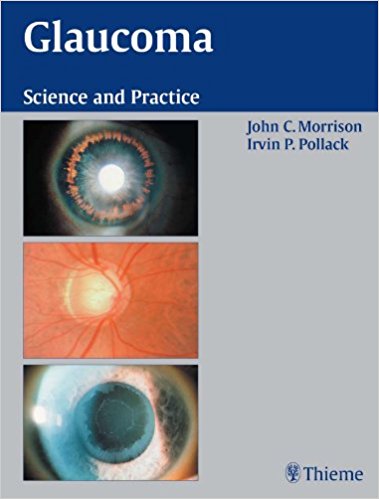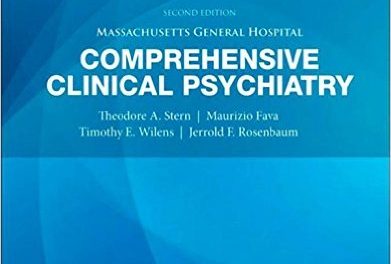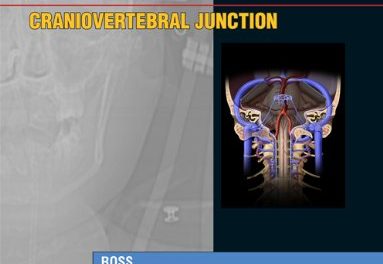 Editors: John C. Morrison, MD; and Irvin P. Pollack, MD
Editors: John C. Morrison, MD; and Irvin P. Pollack, MD
Publisher: Thieme – 530 pages
Book Review by: Nano Khilnani
As of the year 2000, nearly 67 million people worldwide had glaucoma, including about two million in the United States, according to a Wikipedia article. Some 6.7 million or about ten percent of them were blind in both eyes. It occurs more commonly among older people. Globally, it is the second leading cause of blindness after cataracts. It originated from the term glaukos which in Greek means blue, green, or gay.
Glaucoma is a term used collectively for a group of eye diseases which result in damage to the optic nerve and eventually, loss of vision. The damage to the optic nerve can be seen with an instrument called ophthalmoscope. The most common type is open-angle glaucoma. Less common types include closed-angle glaucoma and normal-tension glaucoma.
Open-angle glaucoma develops slowly over time and there is no pain. Side vision may begin to decrease followed by central vision resulting in blindness if not treated.
Closed-angle glaucoma can present gradually or suddenly. The sudden presentation may involve severe eye pain, blurred vision, mid-dilated pupil, redness of the eye, and nausea. Vision loss from glaucoma, once it has occurred, is permanent.
The cause of glaucoma has still not been found, so it hampers the ability to predict who will develop it and require treatment to prevent loss of vision. Risk factors for glaucoma include increased pressure in the eye, a family history of the condition, migraines, high blood pressure, and obesity.
This is a book on the pathophysiology, epidemiology, and genetics of the many types of glaucoma. The information in this book is authoritative, well documented, and clearly presented.
Sixty specialists on glaucoma and related areas in ophthalmology, including the two editors named above, mainly from the United States but also from four other countries – Canada, Estonia, Finland, and the United Kingdom – authored or coauthored the 46 chapters of this book, which are organized around seven broad Sections, namely:
- Section I. Epidemiology and Genetics of Glaucoma
- Section II. Determinants of Intraocular Pressure
- Section III. The Optic Nerve
- Section IV. The Glaucomas
- Section V. Medical Therapy of Glaucoma
- Section VI. Laser Therapy of Glaucoma
- Section VII. Surgical Therapy of Glaucoma
Among the features you will find in the chapters are the following :
- Introductory Remarks
- Topics and Subtopics – Discussions
- Charts
- Controversies
- Images
- Pearls
- Special Considerations
- Tables
- References
Let us take a closer look at the outline of the contents of chapter 16, Angle-Closure Glaucoma authored by Irvin P. Pollack MD and Jacob Wilensky, MD
- Primary Angle Closure Glaucoma With Pupillary Block
- Background
- Pathophysiology
- Diagnosis and Differential Diagnosis
- Diagnostic Techniques For Pupillary Block
- Provocative Testing in Angle-Closure Glaucoma
- Management of Angle Closure Glaucoma With Pupillary Block
- Secondary Angle Closure Glaucoma with Pupillary Block
- Posterior Synechiae
- Pupillary Block Following Use of Miotics
- Pseudophakic and Aphakic (Vitreous) Block Glaucoma
- Pupillary Block Following Pars Plana Vitreotomy and Intravitreal Gas
- Primary Angle Closure Glaucoma Without Pupillary Block
- Diagnosis and Differential Diagnosis
- Management
- Secondary Angle Closure Glaucoma Without Pupillary Block
- Anterior Pulling Mechanisms
- Posterior Pulling Mechanisms
- References
Among the principal benefits of owning this book are:
- Key discussions of the pathophysiology of glaucoma, as well as the pharmacologic mechanisms of different drugs and their efficacy
- Valuable tables listing diagnosis and differential diagnosis that lead to quick and accurate clinical decisions
- Helpful pearls, pitfalls, and special considerations that offer guidance in specific situations and show how to avoid problems and complications
- Nearly 300 superb, full-color illustrations that depict the distinguishing features of each entity
- Inclusion of cutting-edge material as ‘neuro-protection,’ and major current clinical trials
This is a very authoritative work on the various types of glaucoma, for medical residents as well as established practitioners in ophthalmology . It covers the basic science and physiology of the disease, diagnostic techniques, treatment options, and other considerations relating to a successful practice in this ophthalmic specialty.
Editors:
John C. Morrison, MD is Professor of Ophthalmology at Oregon Health and Science University, and Director of Glaucoma Service at The Fred P. Thompson Glaucoma Clinic, and Casey Eye Institute in Portland, Oregon.
Irvin P. Pollack, MD is Professor of Ophthalmology at Johns Hopkins University and Emeritus Ophthalmologist-in-Chief and Director of the Krieger Eye Institute at Sinai Hospital of Baltimore in Baltimore, Maryland.
Here’s a Wikipedia video on closed-angle glaucoma – what happens and how it develops: https://upload.wikimedia.org/wikipedia/commons/d/d0/Glaucoma.webm







